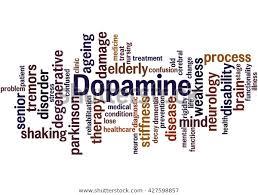AKTIVNOSTI za izvannastavnu aktivnost Mozgići – daroviti učenici
Tečaj: “Kreativnost u razredu u teoriji i praksi” u Istanbulu od 9. do 18. ožujka 2020.
Naziv aktivnosti: Razvoj kreativnosti, kritičkog mišljenja I viših razina mišljenja
Sudionici: daroviti učenici 7. I 8. razreda
Ishodi aktivnosti: Učenici će biti otvoreni za nove ideje i mogućnosti, stvarati inovativna i kreativna rješenja, razviti sposobnost definiranja i rješavanja problema. Učenici će utvrditi da je i jednostavno rješenje prihvatljivo i osnažiti se da pristupe zadacima koji “na prvu” izgledaju složeni, iako to nisu. Učenici će razumjeti prirodu kreativnosti i čimbenike koji joj pogoduju. Učenici će objašnjavati razliku između divergentnog i konvergentnog mišljenja. Učenici će razviti kritičko mišljenje. Učenici će prepoznati niže i više razine mišljenja po Bloom-ovoj revidiranoj taksonomiji.
Poveznica s kurikulumom: Kreativnost, kritičko mišljenje i različite razine mišljenja su komplementarne sa svim nastavnim predmetima i međupredmetnim temama.
Potreban pribor i materijal: papir i olovka, nijema video snimka, fotografija
Detaljan opis aktivnosti:
AKTIVNOST 1
Učenicima se postavljaju pitanja:
- “Kako staviti žirafu u hladnjak?”
Učenici domišljaju svoja rješenja. Točan odgovor: Otvorimo vrata hladnjaka , unutra stavimo žirafu i zatvorimo vrata.
Pitanjem provjeravamo je li učenici obično jednostavne stvari rješavaju na kompliciran način.
- “ Kako staviti slona u hladnjak?”
Učenici domišljaju svoja rješenja. Točan odgovor: Otvorimo vrata hladnjaka , izvadimo žirafu, unutra stavimo slona i zatvorimo vrata.
Pitanjem provjeravamo sposobnost učenika da razmišljaju o posljedicama svojih djela.
- “Kralj lavova sazvao je sastanak životinja. Sve su životinje došle osim jedne. Koje?”
Učenici domišljaju svoja rješenja. Točan odgovor: Nije došao slon, jer je u hladnjaku.
Pitanjem testiramo pamćenje učenika.
- “Moraš prijeći rijeku. Naseljena je krokodilima. Kako ćeš uspjeti?”
Učenici domišljaju svoja rješenja. Točan odgovor: Preplivat ću. Svi krokodili su na sastanku životinja.
Pitanjem testiramo uče li učenici brzo iz svojih grešaka.
AKTIVNOST 2
Učenicima se postavi zadatak da nabroje što više načina upotrebe nekog predmeta, npr. spajalice.
Učenici su naveli mnogo mogućnosti upotrebe: kao vješalica za mali papir ili ključ, spajalica za kravatu i košulju, za upariti dvije čarape, kao naušnica, kao broš, za označavanje stranice knjige, za kopanje udubine u pijesku...
Učenici razvijaju svoju kreativnost kroz divergentno mišljenje i pokušavaju napraviti nešto drugačije.
Primjeri problemskih zadataka za učenike:
https://www.youtube.com/watch?v=7yDmGnA8HwO
https://www.youtube.com/watch?v=1rDVz_Fb6HQ
https://www.youtube.com/watch?v=98TQv5IAtY8
AKTIVNOST 3
Učenici u slagalici načina postizanja kreativnosti izdvajaju u jednu grupu one načine koji doprinose kreativnosti, a u drugu grupu one koji ju “koče”.
Učenici su u prvu grupu svrstali,npr.: Pokušati nešto drugačije! Promijeniti svoju perspektivu! Napisati nove ideje! U drugu grupu su svrstali, npr.: Rezultati su važni!, Ne sanjaj – realnost! Pokušaj ne griješiti! Zadrži rutinu! Budi perfekcionist! Provodi vrijeme s istim ljudima!
AKTIVNOST 4
Učenici gledaju nijemu video snimku kratke ljubavne priče. (https://vimeo.com/877053).
Zadatak je završiti priču na drugačiji način. Aktivnost je uvod u raspravu o kritičkom mišljenju kao sposobnosti jasnog I racionalnog razmišljanja o tome što učiniti ili što vjerovati. Učenici raspravljaju o opravdanosti tuđih vjerovanja, detektiraju nedosljednosti i pogreške u obrazloženju sadržaja priče, identificiraju I evaluiraju tuđe argumente, procjenjuju logičku povezanost među idejama, identificiraju relevantnost I važnost ideja.
AKTIVNOST 5
Učenike poučimo o različitim razinama mišljenja po revidiranoj Bloom-ovoj taksonomiji (piramidi): razini pamćenja, razini razumijevanja, razini primjene, razini analiziranja, razini evaluacije i razini kreiranja. Pokažemo im fotografiju na temelju koje kreiraju pitanja o likovima i radnji na fotografiji sukladno Bloom-ovoj piramidi.
Primjer fotografije:

Primjeri postavljenih pitanja: Koji dio dana je na slici? Koliko je ljudi na slici? (pamćenje), Tko su ti ljudi? Što rade? ( razumijevanje), Što bi ti radio u takvoj situaciji? (primjena), Objašnjava li žena muškarcu nešto iz svog života ili nešto drugo? (analiziranje), Zašto žena to pokazuje? Zašto su tako usamljeni? (evaluacija), Što oni gledaju? Kakav je odnos među njima? (kreiranje)
AKTIVNOST 6
Za kreativniji pristup poučavanja učenika možemo koristiti jednostavnu metodu “oblaka riječi”: razbacane riječi učenici povezuju u smislene rečenice. Učenici izjavljuju da im je takav način zanimljiviji, a sadržaj lakše pamte nego čitajući ispisani “slide” u PPT prezentaciji.
Primjer "oblaka riječi":

ACTIVITIES for extracurricular activity – Gifted students
Course: "Creativity in the Classroom in Theory and Practice" in Istanbul from March 9th to March 18th 2020.
Activity name: Development of creativity, critical thinking and higher levels of thinking
Participants: Gifted students, 7th grade and 8th grade
Activity Outcomes: Students will be open to new ideas and opportunities,create innovative and creative solutions, develop the ability to define and solve problems. Students will determine that even a simple solution is acceptable and empower themselves to approachtasks that “at first” seem complex, even though they are not. Students will understand the nature of creativity and the factors that favor and support it. Students will explainthe difference between divergent and convergent thinking. Students will develop critical thinking. Students will recognize lower and higher levels of thinking by Bloom’s revised taxonomy.
Curriculum link: Creativity, critical thinking and different levels of thinking arecomplementary to all subjects and cross-curricular topics.
Required accessories and supplies: paper and pencil, mute video, photography
DETAILED ACTIVITY DESCRIPTION:
ACTIVITY 1
Students are asked questions and come up with their own solutions:
- How do you put a giraffe into a refrigerator?
The correct answer is: Open the refrigerator, put in the giraffe and close the door.
This question tests whether a student tends to do simple things in an overly complicated way.
2. How do you put an elephant into a refrigerator?
Wrong answer: Open the refrigerator, put in the elephant and close the refrigerator.
Correct answer: Open the refrigerator, take out the giraffe, put in the elephant and close the door.
This tests student’s ability to think through the repercussions of his actions.
3. The Lion King is hosting an animal conference, all the animals attend except one. Which animal does not attend?
Correct Answer: The Elephant. The Elephant is in the refrigerator.
This tests student’s memory.
4. There is a river you must cross. But it is inhabited by crocodiles. How do you manage it?
Correct Answer: You swim across. All the crocodiles are attending the Animal Meeting!
This tests whether you learn quickly from your mistakes.
ACTIVITY 2
Students are given the task to list as many ways as possible to use an object, for example:
How many things can you do with a paper clip?
The students mentioned many possibilities of use: as a hanger for a small paper or key, a stapler for a tie and a shirt, to pair two socks, as an earring, as a brooch, to mark a page of a book, to dig a hollow in the sand ...
Students develop their creativity through divergent thinking and try to do something different.
The examples of problem tasks for students:
https://www.youtube.com/watch?v=7yDmGnA8HwO
https://www.youtube.com/watch?v=1rDVz_Fb6HQ
https://www.youtube.com/watch?v=98TQv5IAtY8
ACTIVITY 3
In the puzzle of ways to achieve creativity, students single out in one group those ways that contribute to creativity, and in the other group those that "hinder" it.
The question was: Where to get new ideas? Or how to become more creative?
In the first group, students were singled out, for example:
“Try something different!, Change your perspective!, Write down new ideas!”
In the second group, students were singled out, for example:
“ Results are important!, Don’t dream – reality!, Try not to make mistakes!, Stick to your routine!, Spend time with the same people!, Be a perfectionist!”
ACTIVITY 4
Students watch a mute video of a short love story (https://vimeo.com/877053).
The task is to end the story in a different way.
The activity is an introduction to the discussion of critical thinking as the ability to think clearly and rationally about what to do or what to believe. Students discuss the justification of other people's beliefs, detect inconsistencies and errors in the explanation of the content of the story, identify and evaluate other people's arguments, assess the logical connection between ideas, identify the relevance and importance of ideas.
ACTIVITY 5
We teach students about different levels of thinking according to the revised Bloom taxonomy (pyramid): level of memory, level of understanding, level of application, level of analysis, level of evaluation, and level of creation.
We show them a photograph based on which they create questions about the characters and the action in the photograph according to Bloom’s pyramid.
Copy of the photo:

The examples of questions: What part of the day is in the picture? How many people are in the picture? (memory), Who are these people? What are they doing? (understanding), What would you do in such a situation? (application), Does a woman explain to a man something from her life or something else? (analysis), Why does a woman show it? Why are they so lonely? (evaluation), What are they watching? What is the relationship between them? (creating)
ACTIVITY 6
For a more creative approach to teaching students, we can use a simple “word cloud” method: students connect scattered words into meaningful sentences. Students say that this way is more interesting to them, and the content is easier to remember than reading the written "slide" in the PPT presentation.
Copy of the “word cloud”:
